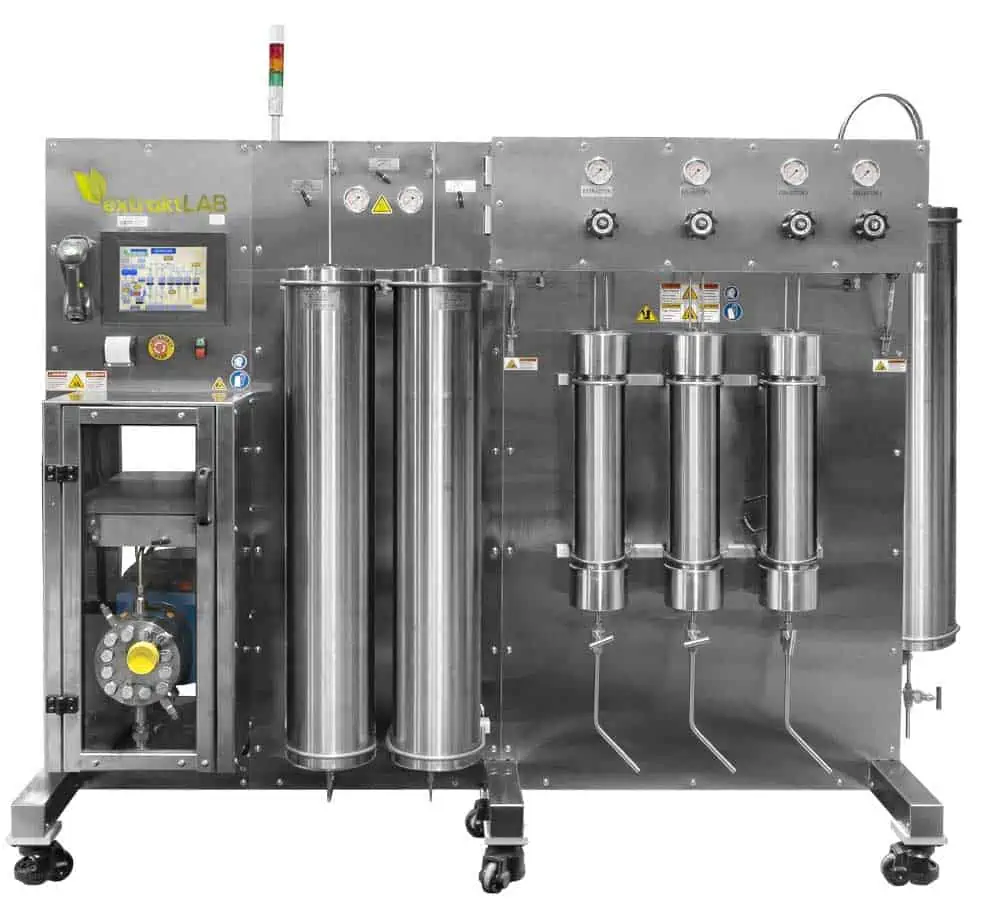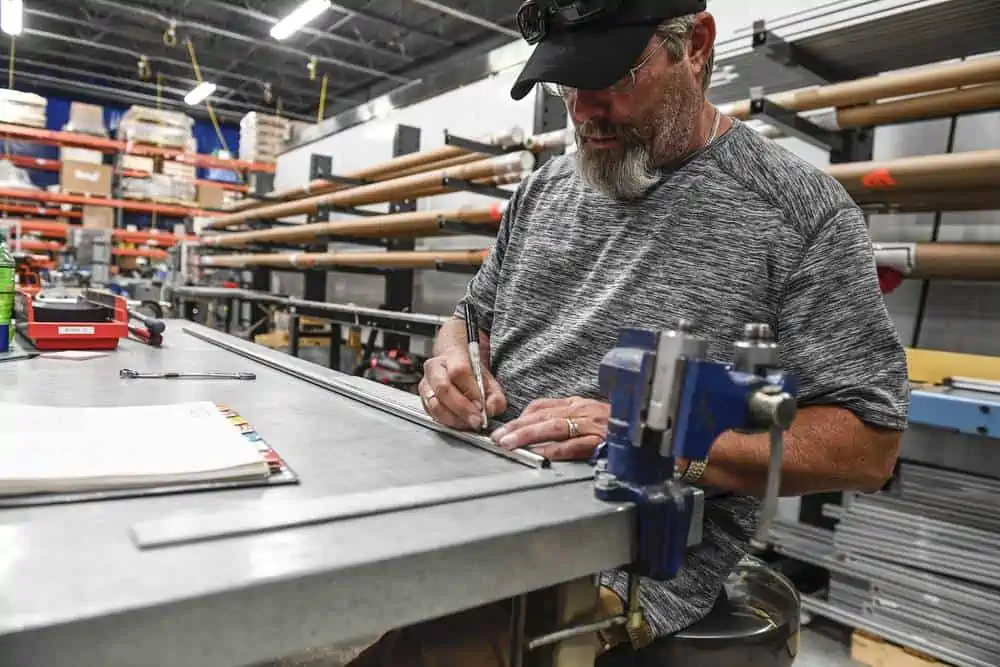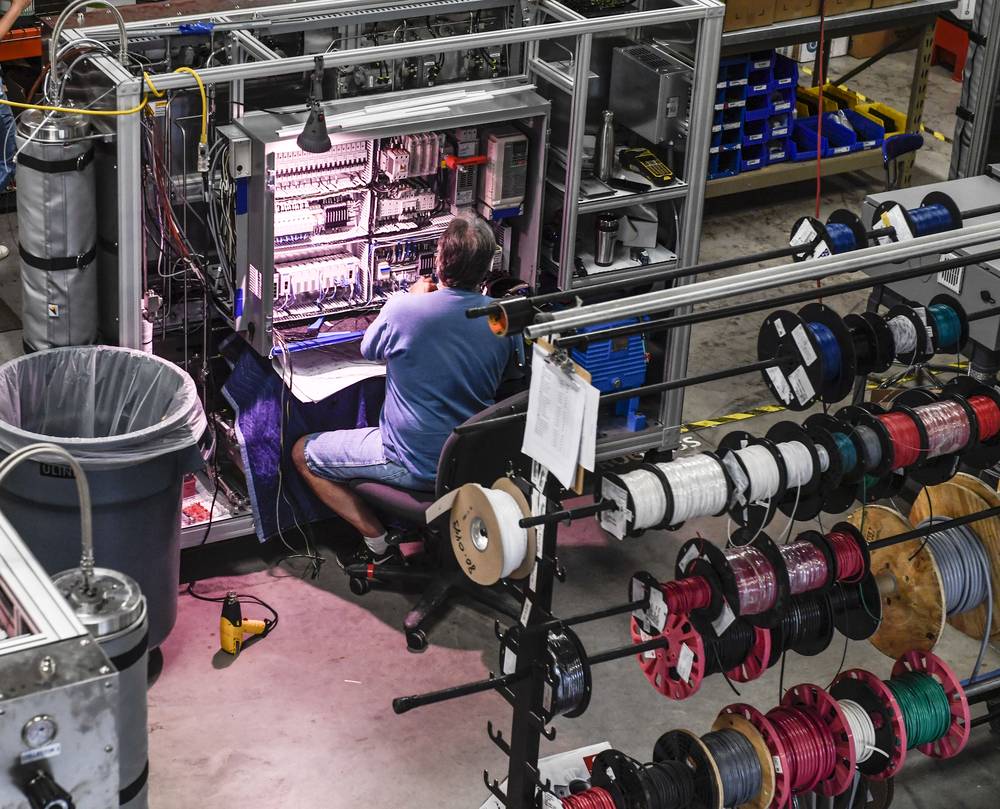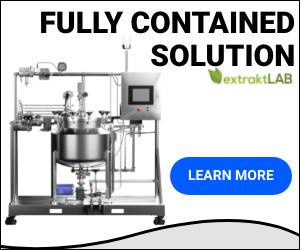Whether you are new to the world of hemp and cannabis extraction, or you are looking to grow your current extraction operation, knowing the costs of buying a new extractor is critical. There are factors that contribute to the price tag you see when buying an extractor. There are also considerable costs associated with the extractor you choose, both upfront and long term. Without having a firm understanding of these factors, you could incur costs that you hadn’t expected or choose an extractor that isn’t optimized for you just because you wanted to keep costs low. We want to prevent that from happening.
This guide is intended for you to use when you are deciding on a supercritical CO2 extractor. The guide should help you determine what to look for in an extractor manufacturer, what size of extractor would work best for your business, long term costs of maintenance and operation and more. Use this guide to steer you in the right direction and help you pick the best possible supercritical CO2 extractor to lead you to success.
Topics and Information Guide
- Types of Supercritical CO2 Extraction Machines You May Need
- Factors to Consider When Choosing an Extractor
- Maintenance and Operation Needed for Supercritical Co2 Extractors
- Maintenance Costs for CO2 Extractors
- Installation and Labor Cost of a Supercritical Co2 Extractor Machine
- Wrapping it Up: Buying Your Supercritical CO2 Extractor Equipment
Types of Supercritical CO2 Extraction Machines You May Need
As you can imagine, not all supercritical CO2 extractors are made the same. The materials and technology used to make a CO2 extraction machine can contribute to the quality of the machine itself, and how effective that particular machine is for your intended purpose. This section will examine some of the various supercritical CO2 extraction machines and how to decide which option might be best for your operation.
Small Scale
There are many options for extractors in this range often process anywhere from 10 to 80 pounds per day depending on the manufacturer. A common price range for extractors in this range can vary from $85,000 to roughly $300,000. There are a number of factors that play into these potential prices including automation, C1D2 compliance, sub and supercritical CO2 extraction features, etc.
Medium Scale
CO2 extractors in this range of throughput are often capable of processing anywhere from 25 to 450 pounds of biomass per day depending on the manufacturer, on-board features, etc. The industry average price range for extractors in this category is most often between $130,000 to $375,000. This is often the most common entry level extraction option as it sits in the middle of price and throughput capacity.
Large Scale
Large Scale extractors are commonly used to process biomass at a rate between 120 to 850 pounds per day. These are some of the most efficient and large scale extractors on the market. These extractors are often priced around $400,000 to $500,000. This price range begins to narrow as the range of extraction throughput begins to find its peak.
Industrial Scale
The largest scale of extractors are often custom built by a manufacturer and tailored to the extractor’s expectations in terms of biomass throughput. An example of this is Precision Extraction’s Vulcan; a high scale extraction system built for industrial levels of botanical extraction. These systems will likely be priced at $500,000+ and can be expected to be the most expensive option on the market.
R&D
These extraction systems are the least costly, but are tailored to a very specific purpose. The fact of the matter is that there are not a lot of options available for R&D applications using supercritical CO2 extractors, but they’re use is something that needs to be noted. If you are looking for a small-scale CO2 extraction system for R&D and research, you may be looking somewhere around $40,000-$60,000 in terms of price.
Automated Systems
Now that we’ve looked at the ranges of biomass processing capabilities of various extractors, let’s take a look at automation and manual systems. The processing method of a supercritical CO2 extraction system is essentially the same no matter the size and configuration of the equipment itself. Clearly the throughput of an extraction system depends on the size of the extraction columns, but system automation is another huge factor in the efficiency of an extractor.
A fully automated system like the E-series by extraktLAB allows for the processor to fully optimize their extraction according to their entire operation and ensure that efficiency is met. With functions like fully automated process control, extraction cycles, solvent recycling, etc. the entire extraction process is effectively streamlined which raises overall throughput and reduces labor costs at the same time.
Upfront costs for automated extraction systems are higher than other manual systems. The price for an automated system can range anywhere from $200,000 to $500,000 and potentially even higher if it is a custom system. It might be easy to write the initial expense of an automated CO2 extractor off as unnecessary, but the long term operational costs of an automated system becomes increasingly more profitable as the production output increases.
Manual systems
For smaller operations with ample staff on hand, a manual CO2 extraction system is a reliable option. Though the specifications of the extraction system are relatively the same, a manual model of an extractor is a simplified method of creating CO2 extracts that can be annually operated by a worker on hand at all times. Extractors in this category are relatively more cost efficient upfront, but may be less cost efficient in the long term depending on the intended output of a particular extraction operation. These extractors can range anywhere from $50,000 to $150,000 depending on the throughput capacity, operating specs, etc.
While the cheaper price tag of a manual extractor may be more appealing, it is important to make this decision carefully. For example, a manual extraction system does not have the capability to automatically change extraction cycles, solvent recovery cycles

| SCCO2 Extractor Types | Average Cost |
| Automated System | $375,000 |
| Manual System | $150,000 |
| R&D | $63,000 |
Factors to Consider When Choosing an Extractor
So, we’ve looked at what factors go into how much it costs to make an extractor, we’ve looked at the various extractors you might need, now we need to look at what factors you need to take into consideration when choosing what extractor will be best for your operation.
What is your timeline for operation?
This is an important consideration when you are choosing who you will turn to for your supercritical CO2 extractor. The lead time to getting your extractor in your facility can be a dealbreaker when it comes to your plan to start extracting. Do you want to start extracting by the next quarter? In three months? Right now? These are important questions as each manufacturer is going to have varying lead times.
While some may have the extractor you’re looking for in stock, it is very unlikely. Most often, the manufacturer will have to take your order and build the extractor of your choosing to your given specifications. That lead time could be a month, or it could be six months. If you are looking to extract immediately, the latter simply won’t do.
So, be sure to ask the manufacturer that you’re in contact with just how long it will take for you to get your extractor in your facility and how quickly you’ll get up and running.
Do you plan on scaling up?
What is the plan for your extraction facility? Are you going to extract enough to pay the bills and make a profit? Or do you plan on continually growing your business and the amount of extract you produce? Maybe your plan is to grow the extract production to a high enough level that you can sell the company and retire. All of these considerations are critical to deciding your first extractor, or your sixth extractor.
Certain extractors are tailor made to be continuous, automated systems with multiple extractors and other extraction equipment that make them ideal for scaling up. Others are best as a singular extractor and are ideal if you are set on a particular throughput. So, it is important to plan ahead and decide whether or not the extractor you plan to purchase is the only one, or if you may be adding extractors in the future to keep up with your scaleup plans.
What is your facility size (for extractor footprint)
Another factor you need to take into consideration is the size of your facility, whether or not you are looking at expanding and the footprint of the extractor you plan to purchase. Of course, the size of an extractor is directly related to the extraction throughput of the system itself.
So, an introductory model of extractor might have measurements somewhere around 40”-50” in width and 60”-70” in length whereas a large scale extraction system could be 60” in width and 100” in length or more. Depending on the layout of your facility, this may be a considerable factor in choosing your extractor.
You also have to keep in mind that there is likely a clearance area size too. For most systems, there is a clearance area that is critical to the proper function and safety of the extraction system. On average, this is typically a few feet around the extractor itself. This may vary depending on compliance such as C1D2, or other regulations that mandate a particular clearance area around the extractor.
How much biomass will you process?
This ties directly back to the correlation between footprint and extraction throughput. Do you have an idea of how much biomass you plan on processing in a day? This might be the most important question that you can ask when picking an extractor. In fact, this question can cover the other factors we covered previously as it can affect your plans to scale up, the footprint of your extractor and ultimately how much processing you are capable of.
The fact of the matter is that extractors vary greatly in their processing capabilities. A supercritical CO2 extractor can range from a biomass processing capability of 10 pounds all the way up to 1000 pounds and beyond. Needless to say, if there is a range that you have in mind that you would like to process, there is likely an extractor on the market that can meet your expectations.
This also ties back to the consideration of scaling up. If there is a set processing throughput that you are aiming for with no intention of expanding or scaling up, a single, high throughput extractor is likely to be the best option for your situation. If you are considering the possibility of starting relatively small with the hopes of expanding your facility and scaling up, it may be in your best interest to start with a low to medium throughput extractor with a relatively smaller throughput. This way, you can plan for your current situation and throughput expectations, while simultaneously looking toward the potential of scaling up, expanding your facility and purchasing more extractors to keep up with the increased processing goals.
What are you willing to spend?
All of these plans amount to nothing if the extractor that is perfect for your operation is beyond the cost threshold you intended to stay under. Of course, the overhead cost of an extractor is the primary consideration, but it is not the only cost factor that will affect your overall price tag of the extraction operation you plan to use. As mentioned above, an extractor can range anywhere from $50,000 to $500,000 or more depending on the processing capabilities, features, etc. But, there are other factors that play into the overall cost of an extractor.
Where do you live? Shipping costs for large-scale equipment can be costly – especially international shipping. How much training is involved in operating the extractor you are looking at? On-site training is essential, but depending on how advanced the equipment is, the length of time and costs associated with training can vary greatly from one extractor to another. Are you looking for full automation? A fully automated system can be more costly upfront, but can be more cost effective in the long term as processing capabilities are increased with less labor costs.
These are the questions that you need to ask the manufacturer of the extractor you are interested in to ensure that the costs associated with the extractor outside of the initial price tag does not exceed the costs you are willing to pay. Otherwise, you could be set on an extractor and find yourself committed to costs you had not anticipated that can make it difficult to get your feet on the ground financially when you start your extraction business.
Calculate Your Cannabis Business Operating Cost
Starting a Cannabis Business? Check out our Calculators and to analyse costs, estimated revenue, yield, initial investments and important metrics for your extraction business.
Maintenance and Operation Needed for Supercritical Co2 Extractors
There are a number of factors that can come into play when you factor in the costs of maintenance and operations of supercritical CO2 extractors. Depending on the manufacturer, maintenance packages can be standard for each individual machine ranging anywhere from $25,000 to $50,000 for a standard maintenance package. However, this is not the final stop in terms of maintenance and operational costs.
Let’s first look at operational costs. Depending on the method of extraction, equipment used, products being created and more, the costs of operation can vary widely. For example, let’s take a look at the extraction method and how that affects operational costs.
While this guide is primarily focused on choosing supercritical CO2 extractors, let’s take a quick moment to compare CO2 extraction to ethanol extraction and show how extraction methods can affect the operational costs of your facility. While there are other extraction methods, these are the two that are most often compared, so we will look at them in terms of operational costs.
Ethanol vs. Supercritical CO2 Operational Costs
Let’s take a look at ethanol extraction first. The upfront costs of ethanol extraction equipment is often appealing to start up companies as the equipment itself is not quite as specialized to the extraction method. In fact, the price tag on a full scale extraction solution tailored to ethanol extraction is likely half that of supercritical CO2 extraction with a full ethanol solution sitting around $2,000,000 and SCCO2 at roughly $4,000,000. The sticker shock of that price alone often drives starting customers away from CO2 equipment right out of the gate.
The fault in this, however, is not fully evaluating the long-term operational costs associated with ethanol vs. CO2 extraction methods. A big factor in this is the solvent itself. For example, the necessary startup solvent costs for ethanol extraction sits somewhere between $5000 -$7000 whereas a CO2 solvent startup cost is just around $500. On top of that, the solvent loss in a day is $3500 for ethanol, and only $115 for CO2. In solvent cost alone, you can see that the operating costs associated with ethanol extraction are significantly higher than that of CO2.
If you take these numbers and factor them into a one year and a 10 year projection, the cost disparity between ethanol and CO2 is even more clear. In just one year, the comparative solvent loss cost between ethanol and CO2 is $1,260,000 and $340,000 respectively. In 10 years those numbers jump to $12,260,000 for ethanol and just $340,000 for CO2. It’s operating costs like this that cannot be overlooked when establishing your choice of extractor as a startup.
Maintenance Costs for CO2 Extractors
Though extractors today require less maintenance than previous years, there are costs associated with ensuring that your equipment is operating correctly. The cost it takes to replace parts, perform repairs, do solvent changeovers, etc. to ensure that your extractor is functioning properly.
An important thing to remember is that maintenance is not only a cost factor because of the repairs, or parts needed to maintain your system, but also the costs associated with downtime. If you are limited to one extractor, and you need to dedicate half, or even a full work day to maintenance on that extractor, you are potentially losing thousands of dollars in revenue. This can be even more costly than the simple maintenance you needed to perform in the first place.
Depending on the manufacturer, there may be packages that you can purchase that will partner you with their operating team to help maintain your extraction system. An example of this is extraktLAB’s 12 month maintenance package which includes coverage of normal wear and tear on your extractor for a full year at $50,000 per extractor purchased.
This may help reduce costs of potential downtime, part replacement, and other factors that could significantly impact your business if you are left on your own in terms of maintenance. Be sure to communicate with your extraction company of choice to see if a maintenance service like this would be beneficial for you.

Installation and Labor Cost of a Supercritical Co2 Extractor Machine
Depending on the type of extraction equipment used, the costs of labor and training needed to properly operate the equipment can be significantly different. For example, ethanol and hydrocarbon extraction equipment is relatively easier to use in terms of the extraction process and is therefore less costly in terms of initial training and operational costs.
Then, there is supercritical CO2 equipment. Because of the science behind supercritical fluid extraction and the operating pressures of the equipment used for this particular extraction type, the need for proper training and operations is doubly as important. As can be expected, the associated costs with training that come with this equipment is more expensive than other extraction methods.
For example, a typical cost for a commissioning and training service provided by a supercritical CO2 extraction facility may range anywhere from $5,000 to $40,0000. With ethanol extraction equipment, that range may only cap at $20,000 to $30,000. Of course, these numbers are dependent on the amount of equipment purchased, amount of on hand laborers that need to be trained in, certifications and regulations that need to be followed, etc.
All that said, it’s important to remember that long term costs are a critical factor in the decision made and whether or not potentially return on investment merits the costs of training. As we touched on above, the long term costs of different extraction methods can be a significant factor on which type of equipment you choose to purchase.
The same applies to the cost of services like training and commissioning. Be sure to measure your initial expenses against your long term business goals in order to truly evaluate whether or not it is worth it in the long run.

Wrapping it Up: Buying Your Supercritical CO2 Extractor Equipment
So, after considering all of the factors in this article, you may be in a position to decide what extractor will be best for you. But, where do you start? Let’s take a look at next considerations depending on your role in the industry.
Extractors
Whether you are starting up, or you are an established extraction company looking to scale up and broaden your horizons, there are several steps you can take to choose the right extractor. Perhaps you have been an ethanol based extractor, but you recognize the demand for natural products using supercritical CO2 extraction. Now it’s time to examine the factors that will lead you to the right extractor for that purpose.
If ethanol based extraction is still your primary choice, choosing a high throughput extraction system may not be money well spent. If you want to create niche products like CO2 extracted tinctures, edibles etc. a small to mid scale extractor capable of processing 10 to 100 pounds of biomass may be the best choice for a $50,000 to $100,000 price tag. This allows you to diversify your process and available products for your customers.
Conversely, you may be starting your first extraction startup and don’t know where to start. First, review this article closely and take into consideration all of the factors that play into what an extractor will cost, what the operational and maintenance costs may be, how much throughput you intend to meet, whether or not you plan to scale up, etc.
Then, reach out to a number of manufacturers and be upfront with your questions and concerns. As cliche as it sounds, the right manufacturer will treat you like family. They will take into serious consideration how to make you successful, even at the expense of losing your purchase. They should identify your expectations, your intended price point, your plans for the future and more to establish whether or not their products are the best fit for your needs. If you find a company that is strictly trying to sell you their product, it may not be the best choice.
Investors
Investing in the extraction industry is possibly more lucrative than ever. As you read through this article, you will likely see certain patterns that are more profitable than others and taking those to heart is likely to make your investment opportunities worthwhile in the long term.
For example, long term operational costs can make or break a startup before they ever get their feet on the ground. This is why choosing an extraction method that is capable of keeping up with often overlooked operational costs is essential. We’ve examined the operational costs of ethanol and CO2 extraction methods, the latter of which is vastly less costly in the long term.
Depending on the current or projected profits of a business, an investment in the method of extraction used by a company could mean the difference between the long term success of the investment opportunity and a potential failed business venture.
If you are an investor in a startup, you should use these guidelines to your advantage in order to ensure the business you are investing in is capable of making the right choice of extraction equipment for the situation at hand. You should be a part of the decision making process when it comes to deciding the extraction method and equipment used at the startup you’re investing your money in.
Either make sure that the extraction equipment that is chosen by the investor is the most sensible financially, or find somewhere else to invest.
Entrepreneurs
Being an entrepreneur in the extraction industry can be highly lucrative, or a quick way to crash and burn. Choosing the right extraction equipment can make or break a startup business before your feet ever touch the ground. Taking the considerations we’ve highlighted above into thought can be key to making sure the extractor you choose is the right fit for your startup goals.
It’s important to review the operating cost comparison between extraction methods. As a hopeful startup, it’s natural to want to keep startup costs low making the allure of ethanol extraction equipment all the more appealing. But, as mentioned above, your long term operational costs in just one year are vastly more costly than supercritical CO2 extraction equipment. This article highlights the use of supercritical CO2 extraction equipment for a reason; we highly recommend that any startup make the decision to go this route right out of the gate.
After deciding that CO2 is the method for you, you should review the above mentioned details that factor into choosing the right extractor for your plans.
- Where will you be located?
- What size facility are you looking for?
- How much biomass do you intend to extract?
- Do you plan on scaling up?
All of these factors need to be considered in order to ensure that the CO2 extractor you plan to purchase will make your startup successful from the time you open your doors.
After you’ve asked yourself these questions, turn to your team. Whether or not you have an extractor, an investor, a farmer, their input can be valuable to ensuring the choice you make is the right one. Make sure that everyone involved can come to the right conclusion so that the extractor of your choosing will make your business venture a profitable one.


